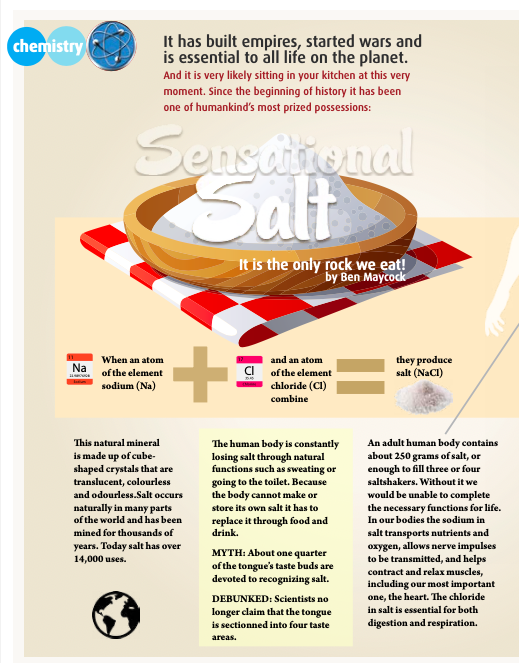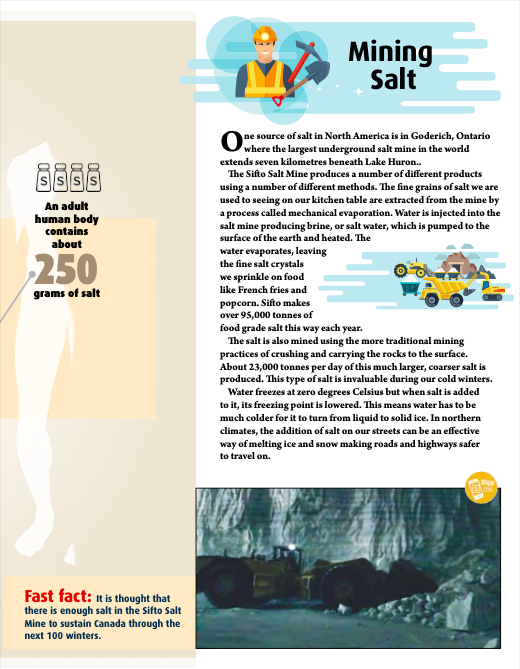


It’s the Only Rock We Eat!
Na + Cl = NaCl
When an atom of the element sodium (Na) and an atom of the element chloride (CI) combine, they produce salt (NaCI).
It has built empires, started wars and is essential to all life on the planet. And it is very likely sitting in your kitchen at this very moment. Since the beginning of history it has been one of humankind’s most prized possessions.
This natural mineral is made up of cube-shaped crystals that are translucent, colourless and odourless. Salt occurs naturally in many parts of the world and has been mined for over thousands of years. Today salt has over 14,000 uses.
The human body is constantly losing salt through natural functions such as sweating or going to the toilet. Because the body cannot make or store its own salt, it has to replace it through food and drink.
An adult human body contains about 250 grams of salt, or enough to fill three or four saltshakers. Without it we would be unable to complete the necessary functions for life. In our bodies the sodium in salt transports nutrients and oxygen, allows nerve impulses to be transmitted, and helps contract and relax muscles, including our most important one, the heart. The chloride in salt is essential for both digestion and respiration.
Myth
About one quarter of the tongue’s taste buds are devoted to recognizing salt.
Debunked
Scientists no longer claim that the tongue is sectioned into four taste areas.
Mining Salt
One source of salt in North America is in Goderich, Ontario where the largest underground salt mine in the world extends seven kilometres beneath Lake Huron..
The Sifto Salt Mine produces a number of different products using a number of different methods. The fine grains of salt we are used to seeing on our kitchen table are extracted from the mine by a process called mechanical evaporation. Water is injected into the salt mine producing brine, or salt water, which is pumped to the surface of the earth and heated. The
water evaporates, leaving the fine salt crystals we sprinkle on food like French fries and popcorn. Sifto makes over 95,000 tonnes of food grade salt this way each year.
The salt is also mined using the more traditional mining practices of crushing and carrying the rocks to the surface. About 23,000 tonnes per day of this much larger, coarser salt is produced. This type of salt is invaluable during our cold winters.
Water freezes at zero degrees Celsius but when salt is added to it, its freezing point is lowered. This means water has to be much colder for it to turn from liquid to solid ice. In northern climates, the addition of salt on our streets can be an effective way of melting ice and snow making roads and highways safer to travel on.
